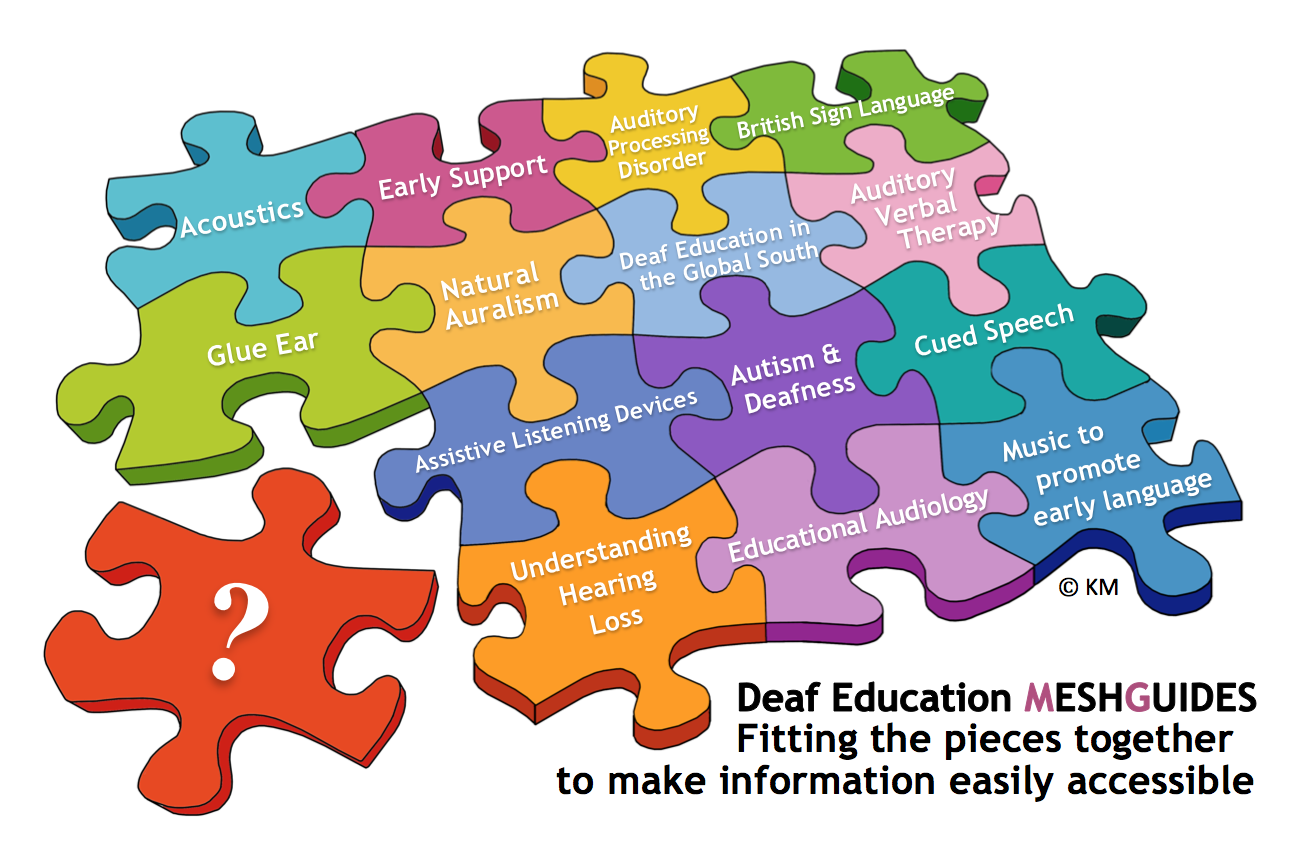Understanding Hearing Loss
|
|
Understanding Hearing LossListening starts in the womb. At 24 weeks gestation the bones of the middle ear are fully formed. At 30 weeks a baby hears the rhythm and intonation of speech, can access some vowel sounds in the womb and recognises their mother's voice (Crystal, 2010). Hearing loss can now be diagnosed at birth and studies have shown that early diagnosis, combined with early fitting of amplification and early support, results in language skills in line with peers (Yoshinaga-Itano, 2006). This MESHGuide has been designed to provide clear information about the nature and degree of hearing loss and the impact that a hearing loss has on speech access. It provides an overview of different types of amplification and communcation needs. Practical advice for minimising the impact of a hearing loss and improving the listening environment are included. Links to many publications from the National Deaf Children's Society (NDCS) have been collated in an easily accessible way and links to important documents on the English Government website for applying for Disability Living Allowance have been brought together for ease of access. This guide has been written to provide parents new to hearing loss with important information collated in one place. Photographs are used to present information clearly and promote understanding. For staff in nurseries and schools, this guide will help to provide a deeper understanding of the child's hearing needs and enable them to consider how they can adapt their practice and improve the listening environment to promote inclusion and access. The Covid 19 Pandemic has highlighted the need to work remotely and this MESHGuide has been written with this in mind. Collating all the revelevant information for families and education settings in one place, means that the guide can be used to deliver training either by screen sharing or talking through the different sections in a telephone conversation. Easy access to a hearing loss simulation, links to NDCS videos which show the importance of reducing background noise and positioning, combined with clear photographs that promote basic daily hearing aid management, provide a visual aid, when it is not possible to model this face to face. The Department for Education in England, uses the term 'hearing impairment' and the National Deaf Children's Society (NDCS) uses the term 'deaf' to refer to all types of hearing loss from mild to profound. If further testing takes place after the Newborn hearing screen, a paediatric audiology department will use the British Society of Audiology audiometric descriptors of mild, moderate, severe and profound to describe a hearing loss. This guide is created to be used immediately after the identification of 'hearing loss' and as this may be the only terminology used at that point, it is appropriate to support understanding by using the same terminology in this guide. This guide is one in a series of Deaf Education MESHGuides produced by the BATOD Foundation. Links are provided throughout to other guides with more detailed information in different areas. For example there is a MESHGuide dedicated to Early Support, Glue Ear, Radio Aids, Acoustics, British Sign Language, Natural Auralism and many more as can be seen below.
BATOD use the term ‘deaf’ to refer to all types of hearing loss from mild to profound. This guide has been written primarily for use with families to provide information at the point of identification following a hearing test. The NHS use the term ‘hearing loss’ and the British Society of Audiology descriptors of mild, moderate, severe and profound hearing loss. The term ‘hearing loss’ is used in this guide to make the information relatable to terminology that has been introduced to families at this point.
References Crystal, D. (2010) A little book of language. London: Yale University Press. Crystal, D. (2010) DC Blog [Online]. Available at http://david-crystal.blogspot.co.uk/2010/01/on-language-and-colic.html [Accessed:9 March 2019]. Crystal, D. (2011) Introduction to Language, Lecture Commentary 2011 Yoshinaga-Itano, C. (2006) ‘Early identification, communication, modality, and the development of speech and spoken language skills: Patterns and considerations.’ In Spencer, P.E. and Marschark, M. (eds.) Advances in the spoken language development of deaf and hard-of-hearing children. New York: Oxford University Press. pp. 298-327. |




